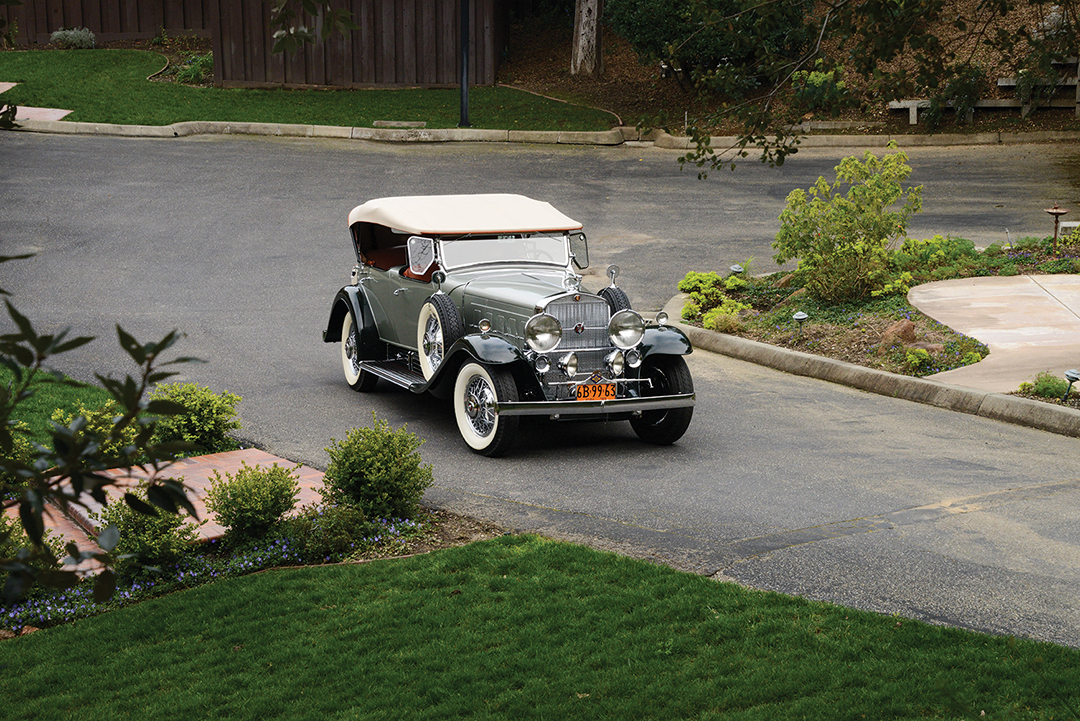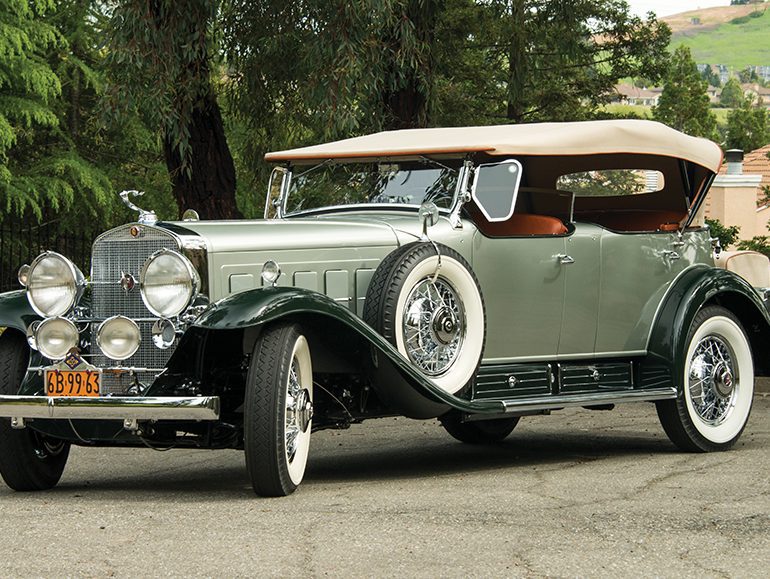Cadillac’s Fabulous 1930 V16 Dual Cowl Sports Phaeton
In the wild and wooly 1920s, custom-bodied cars were all the rage among movie stars, captains of industry and yes, even among gangsters. Having a flashy, expensive car was a way for owners to flaunt their status to the rest of society. During this period, the competition in luxury cars was fierce among the leading manufacturers including Duesenberg, Stuz, Packard, Marmon and Pierce-Arrow. Unfortunately, the one-time leader in luxury cars, Cadillac, lagged behind, outpaced by their rivals.
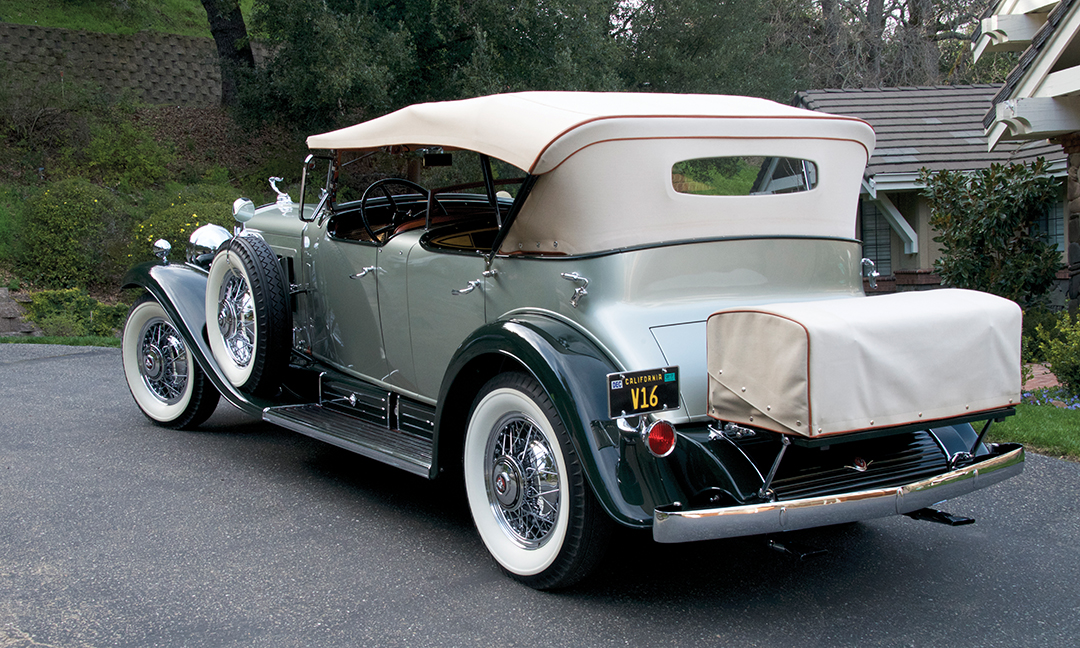
With a clean sheet of paper the team designed the engine with a 45-degree cylinder bank angle with overhead valves chosen to keep the unit narrow, with easy access to all the components. In addition, the engine was “styled” with polished aluminum and porcelain, including a pair of polished valve covers.
This revolutionary V16 engine was introduced at the 1930 New York Auto Show where it stunned the automotive market. Until then, only Bugatti had produced a 16-cylinder engine, created by bolting two eight-cylinder engines together. With one brilliant stroke of engineering, Cadillac reclaimed the top of the luxury car market.
The timing of the V16’s introduction was unfortunate for as outstanding as it was, the economy in the United States was at a low point due to the Depression. As a result, the high price of these luxury Cadillacs ($5,300 – $9,500), combined with the poor economy made them very difficult to sell. Production of the V16 only lasted 10 years, 1930-1940, and totaled a little over 4,300 cars. Of the various V16 models built, only 85 were Dual Cowl Sport Phaeton’s (1930–’31) making this model very rare indeed.
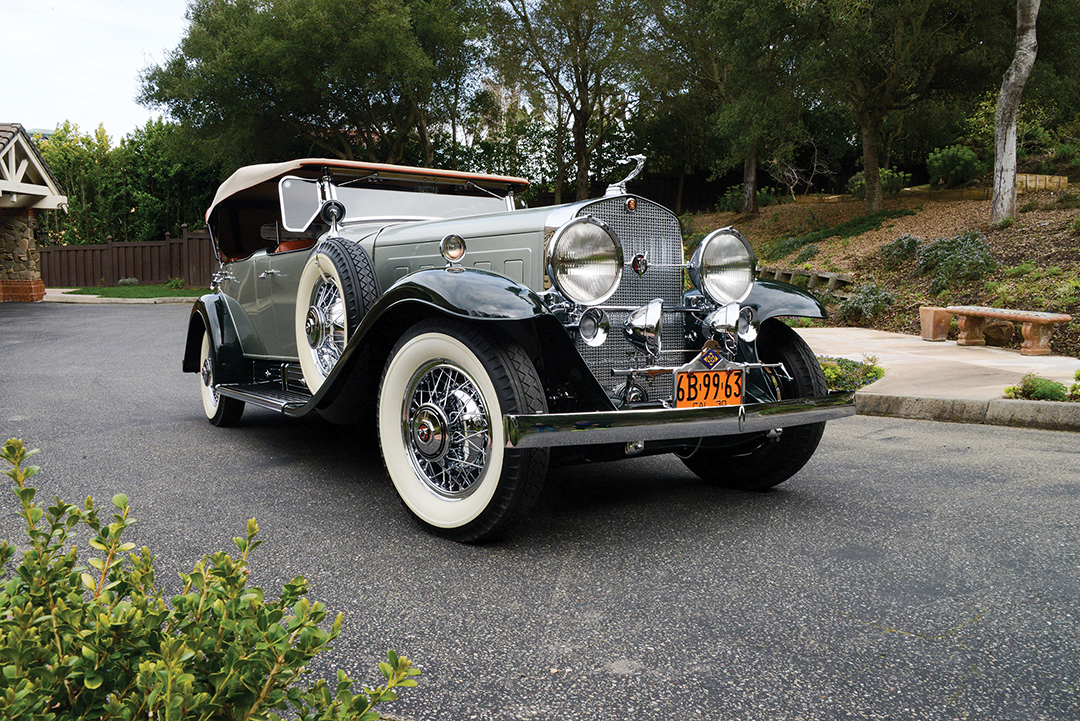
Steve Marini
San Francisco Bay Area resident Steve Marini recalls his first car purchase at 14-years old, “I bought a 1957 Ford Ranchero cheap, did some work on the car then sold it for a profit.” This was the beginning of his life-long association with cars that continues today. As early as he can remember, Marini was fascinated with anything mechanical, disassembling and reassembling whatever device he could get his hands on. This mechanical knowledge base would serve him well throughout the years as a hobby turned into a business and into a car collection. Marini has bought and sold thousands of cars by his account, over the past 40 years, and he still enjoys the search for the next car for his collection. Among his various businesses, he has been involved in auto classified newspapers and publishing and for the last 22 years, has owned GM Sports, a General Motors car salvage yard and restoration business.
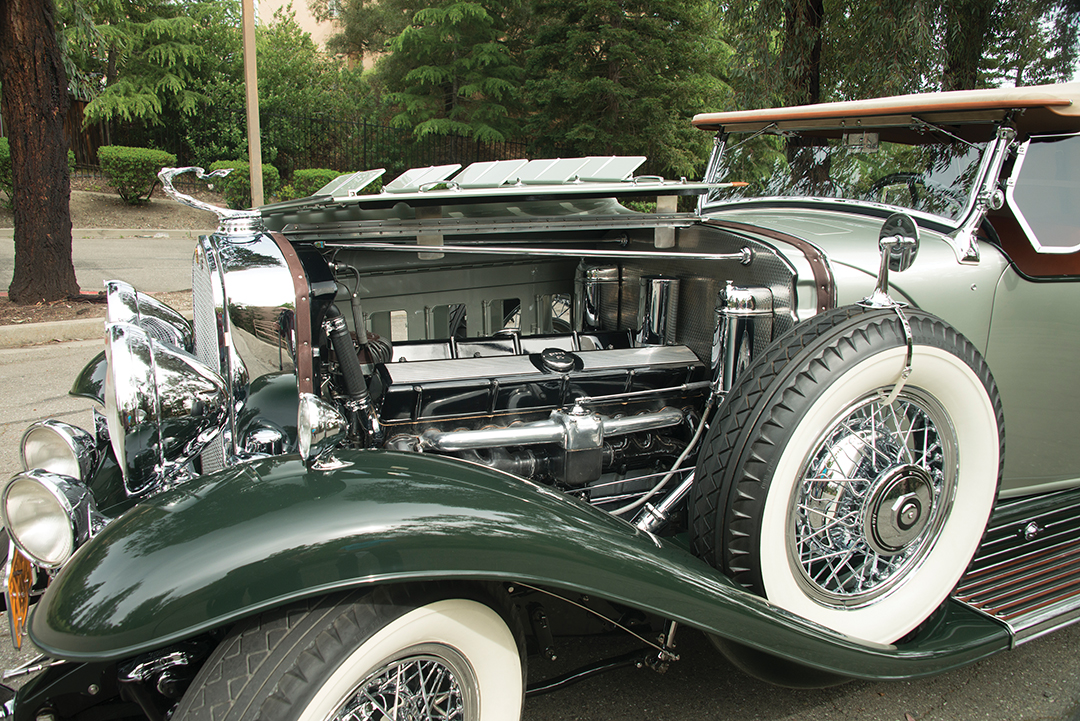
Several months went by and Marini called the owner again and asked if he could just see the car and went on to explain his long-time affection for the V16 models. Marini adds, “the owner declined once again, but I told him how serious I was about buying the car, if and when it would be for sale.” Then, about three months later, the owner called to say he was considering selling the car. Marini asked if he could come look at the car and the owner reluctantly agreed.
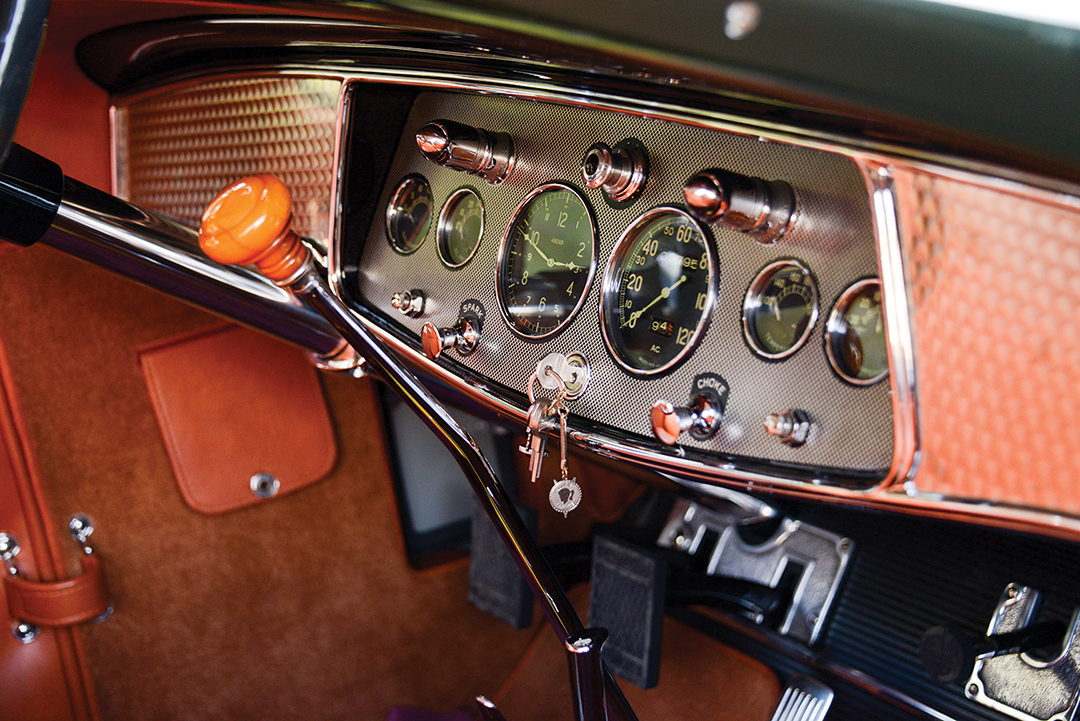
A False Start
Six to seven months had now passed since Marini first made contact with the V16’s owner, but his patience was about to pay off…or so he thought at the time. He received a phone call from the car’s owner about one month after their last visit. The owner said he was ready to sell, so they made a date to meet. Over a cappuccino at the owner’s home, they talked about a selling price, but after some back and forth, they could not come to an agreement.
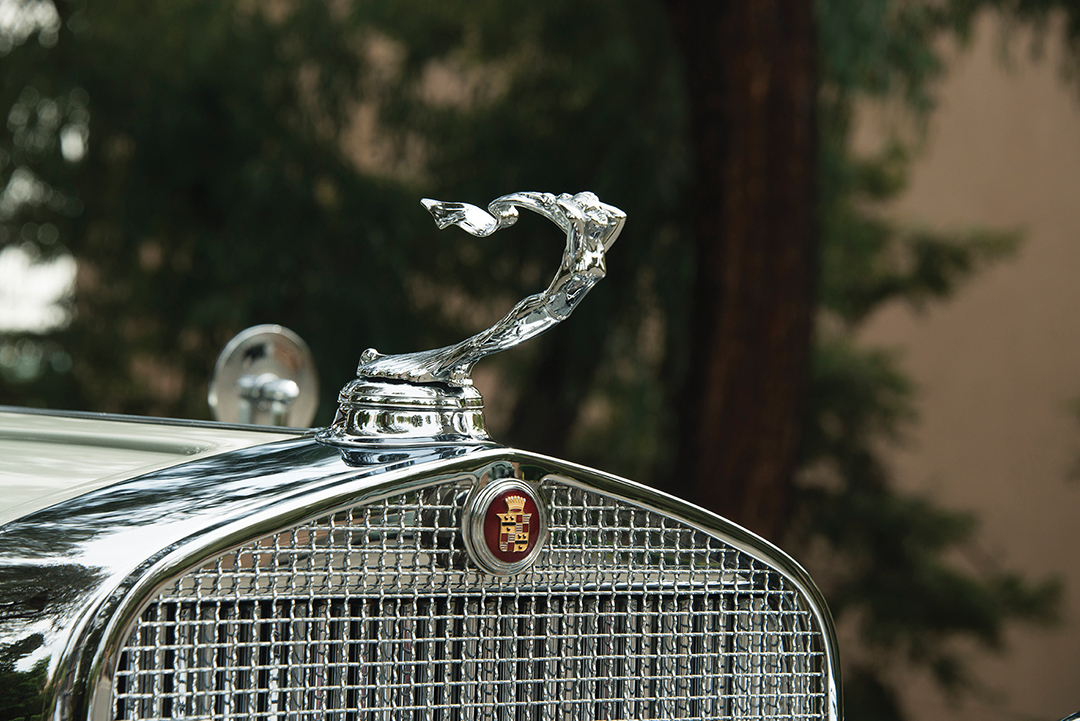
More time goes by and Marini receives another call from the owner who says he is finally ready to sell the car. Once again they arranged to meet the following day, hand over the check and pick up the car. Everything went smoothly and the V16 finally had a new owner. After almost 18 months of phone calls, visits and false starts, Marini had his “Full Classic” safely parked in his garage at home…mission accomplished.
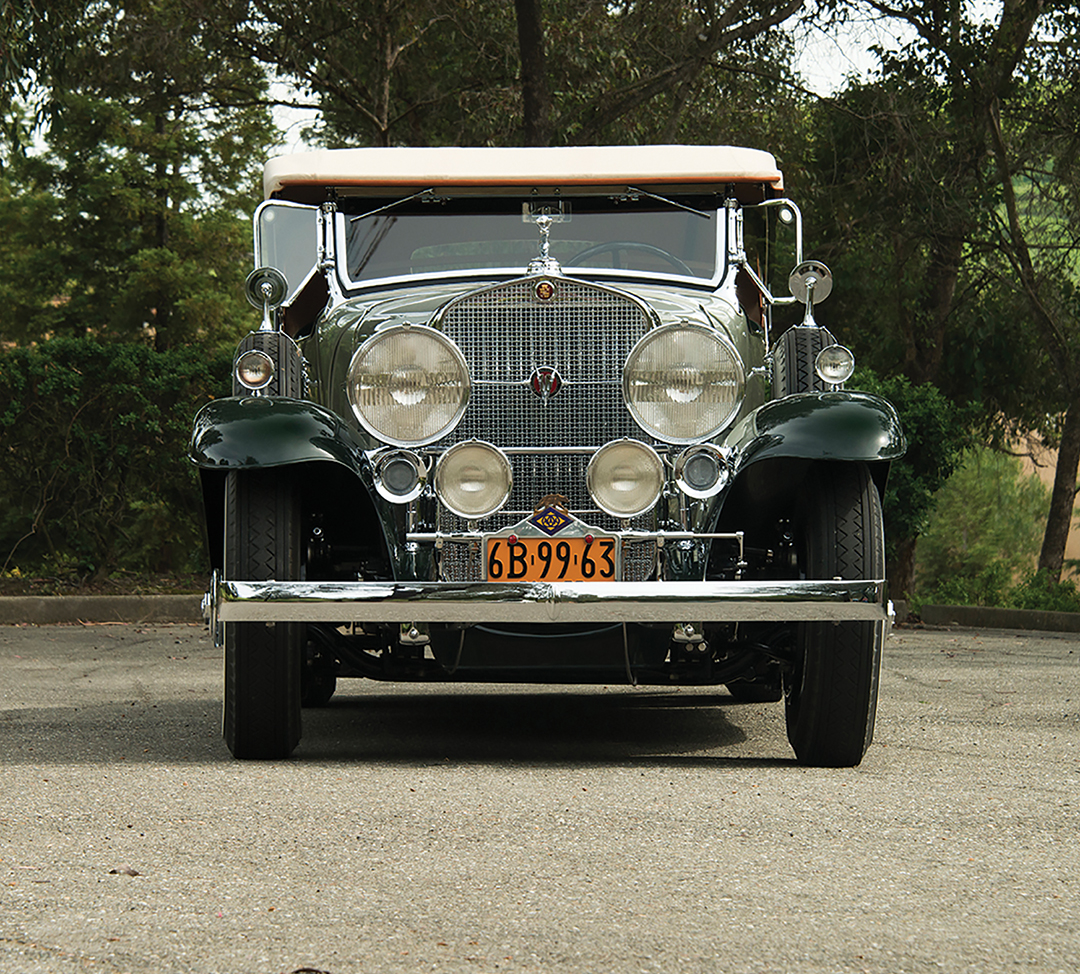
The Car
If you were to conjure up a mental image of the quintessential 1930s luxury car, befitting of a wealthy individual, you would look no further than this Cadillac Dual Cowl Sport Phaeton. It is an amazing example of engineering excellence combined with no-expenses-spared luxury features. Seeing the car for the first time in person, a viewer is struck by its overall size and all that chrome up front! A closer look reveals a plethora of expensive features and outstanding craftsmanship that make this series of cars so elegant and desirable. Besides the large main headlights, other features include dual “Pilot Ray” pivoting driving lights; dual side-mounted spare tires; sumptuous, full leather interior; chrome wire wheels; wind wings; chrome radiator stone guard; passenger seat dash with speedometer and clock; distinctive cloisonné V16 badges; rear-mounted trunk with a canvas cover matching the convertible top; and, to top it all off, the iconic Cadillac Goddess hood ornament.
The magnificent V16’s engine is an impressive piece of engineering and design with a single carburetor and fuel system for each bank of eight cylinders; hidden wiring; engine-turned firewall; chromed accessories; mechanically operated cooling louvers on the sides of the hood and thermostatically controlled louvers on the radiator.
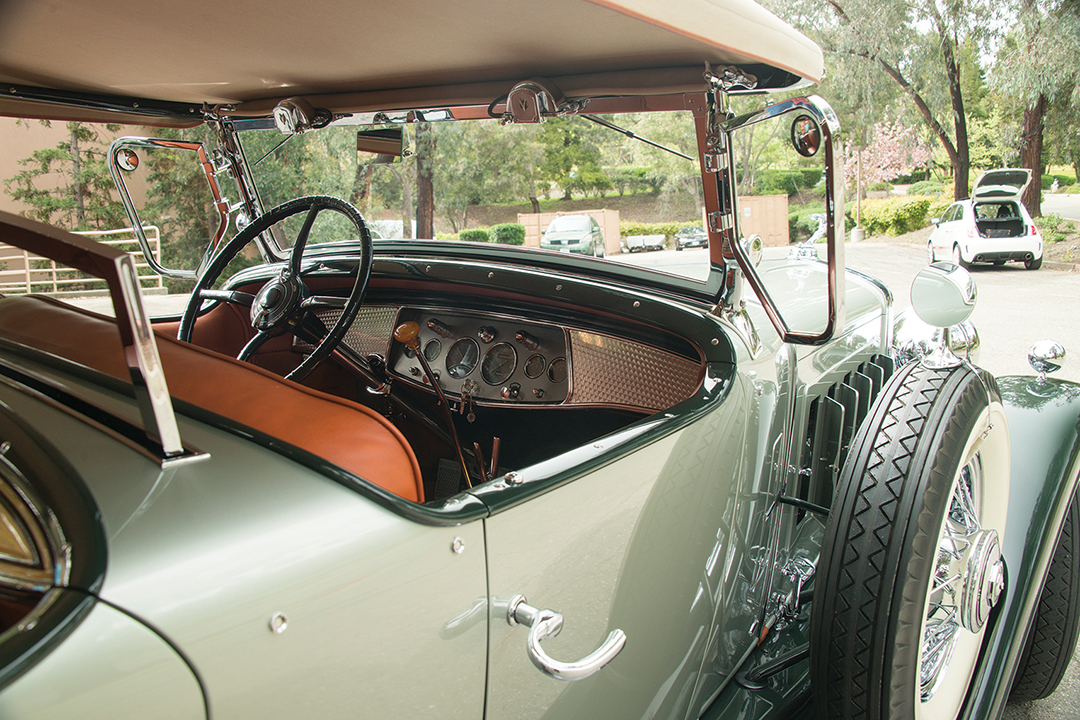
Driving a V16
Marini often takes the car on short trips to his hometown for a meal, but has also taken the Cadillac on longer trips on the freeway. While the car weights in at approximately 6,000 pounds and is 18 and a half feet long, it is relatively easy to drive. Marini explains, “the engine develops almost 320-foot-pounds of torque so all you need to do is put it in gear, let out the clutch and off you go. Its like a locomotive and climbs hills with ease.” On one freeway trip, the car easily accelerated to 65 miles an hour and was still pulling when Marini decided to slow down due to the wind buffeting the canvas convertible top.
Taking the Cadillac for a spin is not quite the same as pulling your average family sedan out of the driveway for a trip to the local supermarket. Not many people pay attention to the family car of today, but this is certainly not the case with the stunning, classic Sport Phaeton. Marini’s 17-year-old son was perplexed why his dad didn’t own a modern sports car, like a Ferrari or McLaren instead of an 80-year-old classic. Marini replied, “One, I don’t fit in them and two, they don’t appeal to me. I buy what I like.” His son changed his feelings about the Cadillac after a trip to the local coffee shop in the car when all the teenaged girls they passed were yelling and waving to him as they drove by.
As you can imagine, wherever Marini takes the car, it draws a wave or a thumbs up from a passing motorist, or a crowd gathers to admire its grand appearance and make the usual inquiries, “What is it? What year was it built? How big is the engine? Why are the back seats separate from the front seats?” This is not the type of car anyone can just walk by without stopping to have a look.
